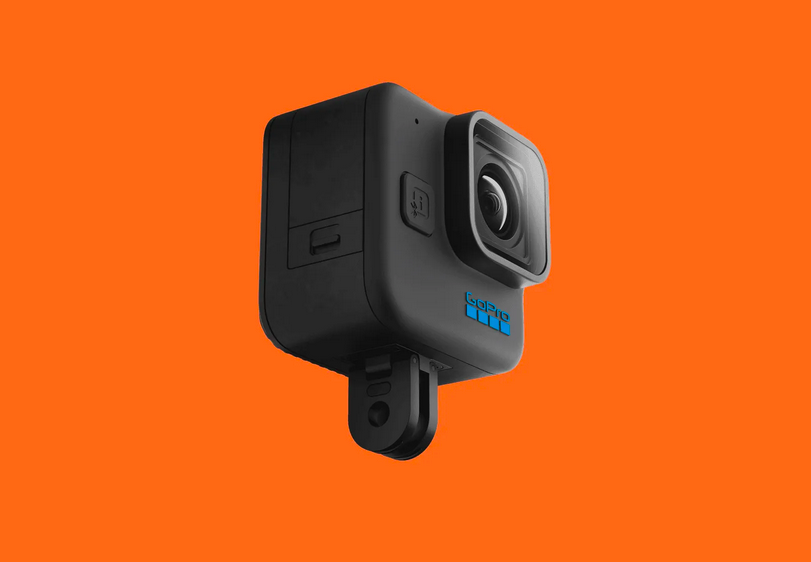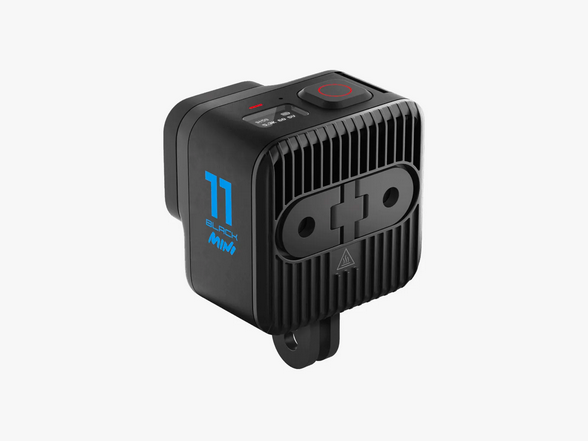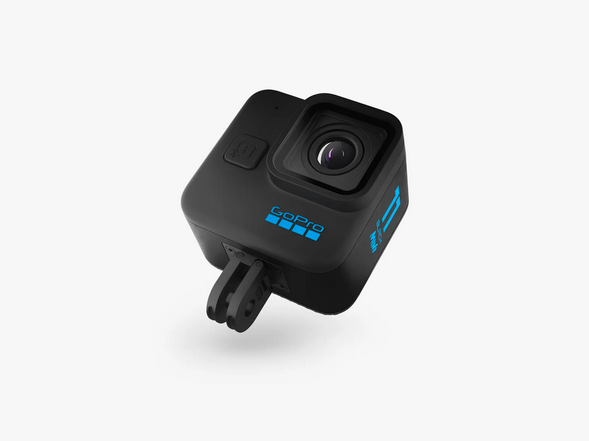How does it work

en
 English
English
 Deutsch
Deutsch
 Italiano
Italiano
16 December

When GoPro announced the new Hero 11 Black earlier this year, it also announced a brand new camera as well: the GoPro Hero 11 Mini. Its release was slightly delayed but it’s now finally shipping. Unfortunately, its existence makes buying a GoPro more complicated than it used to be.
The GoPro Hero 11 Mini is essentially a set of compromises to save size and weight over the full-size GoPro. For the right kind of user, these compromises will be well worth the savings in weight, size, and price. For most of us though, the Hero 11 Black remains the GoPro to get.
The Hero 11 Mini is 13 percent smaller than the Hero 11 Black. That doesn’t sound like a whole lot, and in some ways, it isn’t, but for situations where wind resistance and drag are factors—on your motorcycle helmet, for example—it’s a big enough deal that any size reduction helps.
The Mini is technically about 4 mm thicker but the same height as the full-size Hero 11. Where it's smaller is the width, which is 20 mm less than the full-size camera. To save that space, GoPro got rid of all the screens on the Mini. This has the distinct advantage of making the Mini more rugged. The big screens on the Hero 11 Black are the most vulnerable points, and most of the destroyed GoPros I’ve seen usually have cracked screens or lenses. The Mini eliminates at least the possibility of this happening. There is technically a tiny LCD on top of the camera to show you things like the current shooting mode, but to frame your shots and delve into settings, the Mini requires the GoPro Quik app.

Until the Mini arrived, I’ll confess I had never really used the Quik app to set up my GoPro. Even the shots where I am not going to be monitoring them constantly—like when I’ve strapped the Hero 11 to the front of my paddleboard or surfboard—I still set up everything using the rear screen.
The app works fine, and the transition from screen to app is easy—the app is mostly the same menus as you get with the screen interface, with one notable exception. At first, I thought the Mini did not support Timelapse mode because it’s not a menu item in the Quik app. In the interface for the Black, there are three shooting modes: Video, Timelapse, and Photo. But in the Quik interface for the Mini, there is only one button: Video. It’s when you click to change your video settings that you’ll also find Timelapse, along with all other special modes like Star Trails, Light Painting, and so on.
Moving Timelapse mode didn’t bother me that much once I figured it out, but what it means is that you can’t save presets here in the main menu like you can in the Black. That makes switching video modes difficult. You either have to do it on the camera, which is a tedious process with the single-line LCD screen, or you have to pull out the app, which honestly, is also tedious. The message here is that if frequently changing shooting modes is a part of your workflow, the Mini is not for you. That said, this seems like a flaw that could easily be solved by a software or firmware update.
There are two other small design differences from the Hero 11 Black. The Mini has not one, but two sets of flip-down feet for mounting. Like the full size, there are two feet on the bottom, but you also get a rear mount to point the camera forward. Again, I see this as a huge advantage for helmet mounting since it will get you a forward-looking shot without sticking the camera up as high on the helmet.
The other big difference is there’s no removable battery. The good news is that the battery inside is the same as the Enduro that’s now standard on the Hero 11 Black, so shooting times are pretty close. The Hero 11 Mini claims 73 minutes when shooting 5.3K at 30 frames per second. I got 70. The same settings on the Hero 11 Black lasted 73 minutes. Pretty much a wash. But the difference is that you can swap batteries on the Black and you can’t on the Mini. You can power it with an external power pack. As of this writing, there is no pass-through door for plugging in a USB cable, but you can just pull off the side door and plug in a USB-C cable in it that way.
The internals of the Mini are nearly identical to the Hero 11 Black. The Mini uses the same sensor, shoots at the same video resolutions and frame rates, and to my eyes and ears, produces the same results. That said, there is one big thing missing and one small thing to be aware of.
There’s no Photo mode. You can pull 24-megapixel stills out of 5.3K video clips—which, to be honest, is all I do anyway—but there is no dedicated photo mode, and no ability to shoot RAW photos like you have in the Hero 11 Black. There’s also no GPS support, which means you lose out on a few features in the Quik app.

The Mini works great if you want a physically smaller action camera. To me, it seems as though it’s designed primarily for scenarios where you set it up, mount it, and shoot without changing anything. I was initially enthused about it. I do a lot of shooting where I don’t need a screen or monitor the footage at all. But I do change shooting modes quite a bit, especially frame rates, and that’s just too awkward of a task on the Mini that it wasn’t enjoyable to use.
If you frequently change settings, spend the money to get the full-size Hero 11 Black. On the other hand, if you’re planning to mount this on a helmet and let it sit there, the smaller design and cheaper price make the Mini an easy sell. Likewise, if you’ve already got a full-size GoPro, the Mini could serve you well as a second camera.
As with the Hero 11 Black, the Mini is cheaper if you subscribe to GoPro’s $100 per year cloud service, which brings the total to $300 to the Black’s $400. If you don’t get the subscription the Mini is $400 to the Black’s $500. There’s money to be saved here, and for some use cases the Mini is clearly the way to go, but most people will be better off with the Hero 11 Black.
All article from www.wired.com